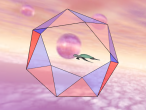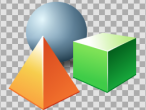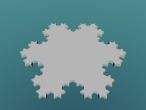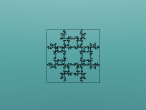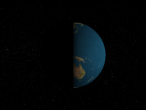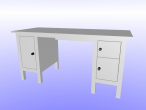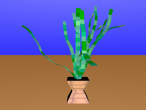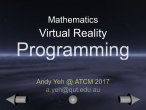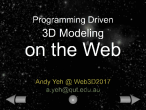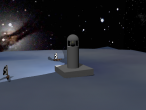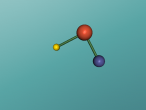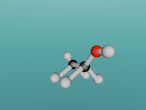Welcome to VRMath2 Comminuty
VRMath 2.0 (VRMath2) is a virtual reality learning environment (VRLE) and an online learning community. It employs the powerful ideas of 3D Logo Microworld and Web 2.0 technologies for learning mathematics. In VRMath2, everyone can Design, Create and Share their 3D virtual worlds. There are also design challenges you can take up and blog later right here in VRMath2 website.

The VAM Temple was a project created by a group of three year 5 (aged 9) students in 2003, using the VRMath 1.0 (VRMath) application. The LOGO program written in VRMath can still run in the VRMath2 application.
VRMath2 is a special online learning community. It offers creation tools for community members to effectively express their mathematical ideas. Ideas can be visualised as 3D space, 2D image, and/or programming language and multimodal texts. The name VRMath 2.0 or VRMath2 stands for Virtual Reality Mathematics. The 2.0 indicates the Web 2.0 style of this community. The original idea of VRMath application was to investigate and utilise Virtual Reality technology for learning mathematics (geometry in particular). Over the last ten years or so, it has become clear that creating and constructing virtual objects or worlds in the VRMath2 environment can be rich learning experiences not just for mathematics, but also for science, technology, engineering and even language and the arts.
The learning process in VRMath2 involves a general progression of thinking and doing from Design, Create and Share. This process is not linear but cyclic or reiterative.
Design
Design is the early stage of technological and engineering process. The ability to design is an indicator of the ability to solve problems. Charles and Ray Eames are among the most important and influential designers of this century. The Design Q & A with Charles Eames has profound interpretation about what is design. I have written a page to commemorate this conversation. For more information about Charles and Ray Eames, and their design artefects, please visit the Artsy’s Charles and Ray Eames page.
Design usually involves define needs, analyse constraints and plan for prototyping. In VRMath2, designers will consider the dimensions of the virtual objects (e.g., a table), the resources available in the VRMath2 Editor (e.g., primitive shapes and materials), and then prototype with some drawings or models. In the VAM Temple example, the three primary designers had designed and drawn what they wanted about the Temple (see figures below).
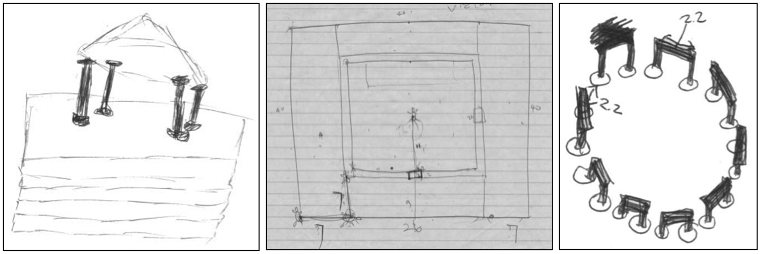
Create
After the design stage, the designers can then proceed to create the products (i.e., 3D virtual objects or worlds) in VRMath2 Editor. "Create" has been in recent years, promoted as the higher order thinking and on top of the cognitive process dimension. In VRMath2 learning environment, this involves programming in Logo, and construct virtual objects in the 3D virtual space of the VRMath2 Editor. The process of creation engages the creators in using multiple semiotic resources (e.g., language, symbols, icons, texture and non-texture materials, and social interactions etc.), from which they make sense of the meaning of mathematics (e.g., distance, scale, shapes and patterns etc.). During the create stage, creators may encounter difficulties or new ideas so they rethink and change their design.
In the VAM Temple project, the three designers and creators had in many iterations created their designed virtual objects and placed them in the designed locations in the 3D virtual space. Below are figures of their created virtual objects.



The Logo program is some 240 lines of codes, including 11 procedures put together collaboratively by the three authors. You can read the details in my VAM Temple blog and below is a diagram of how those 11 procedures were named and put together.
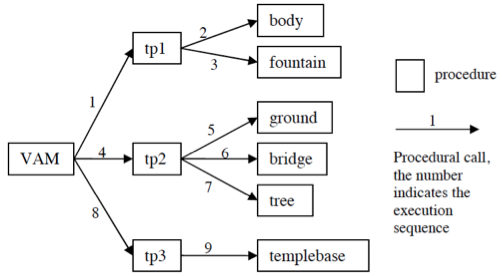
Share
Much learning in mathematics, technology and engineering has occurred during the design and create stages. In VRMath2, the learning continues and enhances when the authors share their creations. In order to facilitate sharing, VRMath2 community provides blogging, discussion forums and social plugins (e.g., LinkedIn, Twitter, Facebook and Google+) for authors to further express and disseminate their ideas. You can visit the VAM Temple blog or many other blogs to see how authors share their creations.
When writing blogs and forum posts, the learning extends to literacy and effective communication. The writing process engages the authors to review and reflect on their learning. The social interaction process also offers the authors a sense of ownership and achievement. Relevant blogs from one or more authors can also be collected to become books. For example, school teachers can collect their students' works into books. This kind of practice can further encourage students to create and learn, all via sharing.
From education and learning perspective, the VRMath2 developers are formulating a framework for the 2.0 social learning, which in the long run will foster the Community of Practice in VRMath2 community.
- 9740 reads


